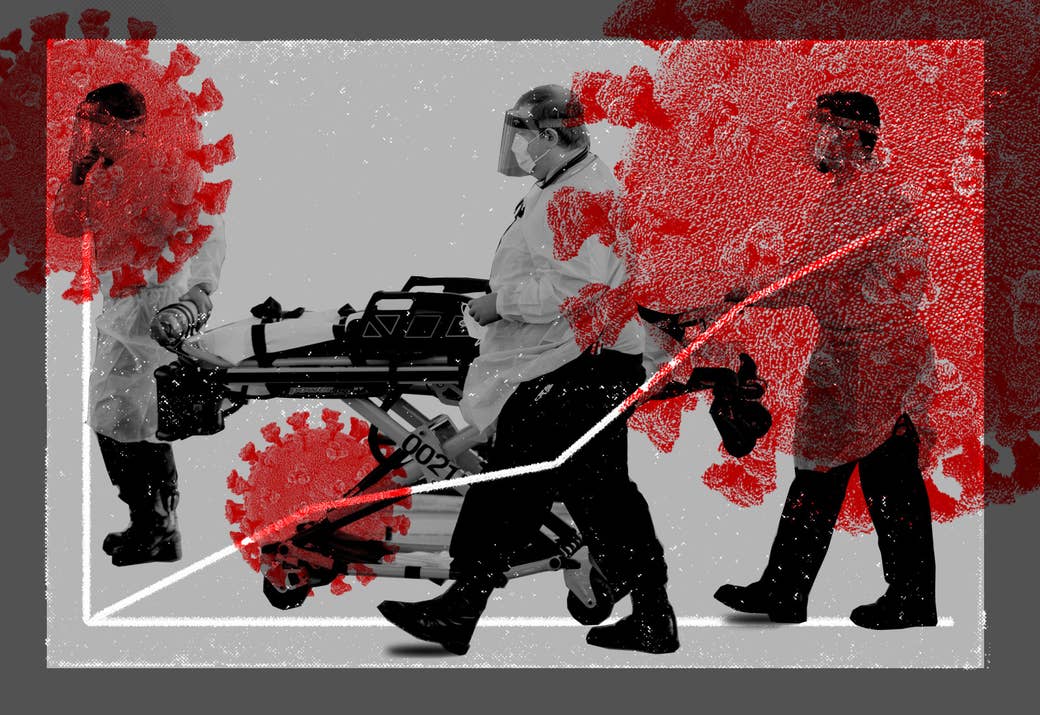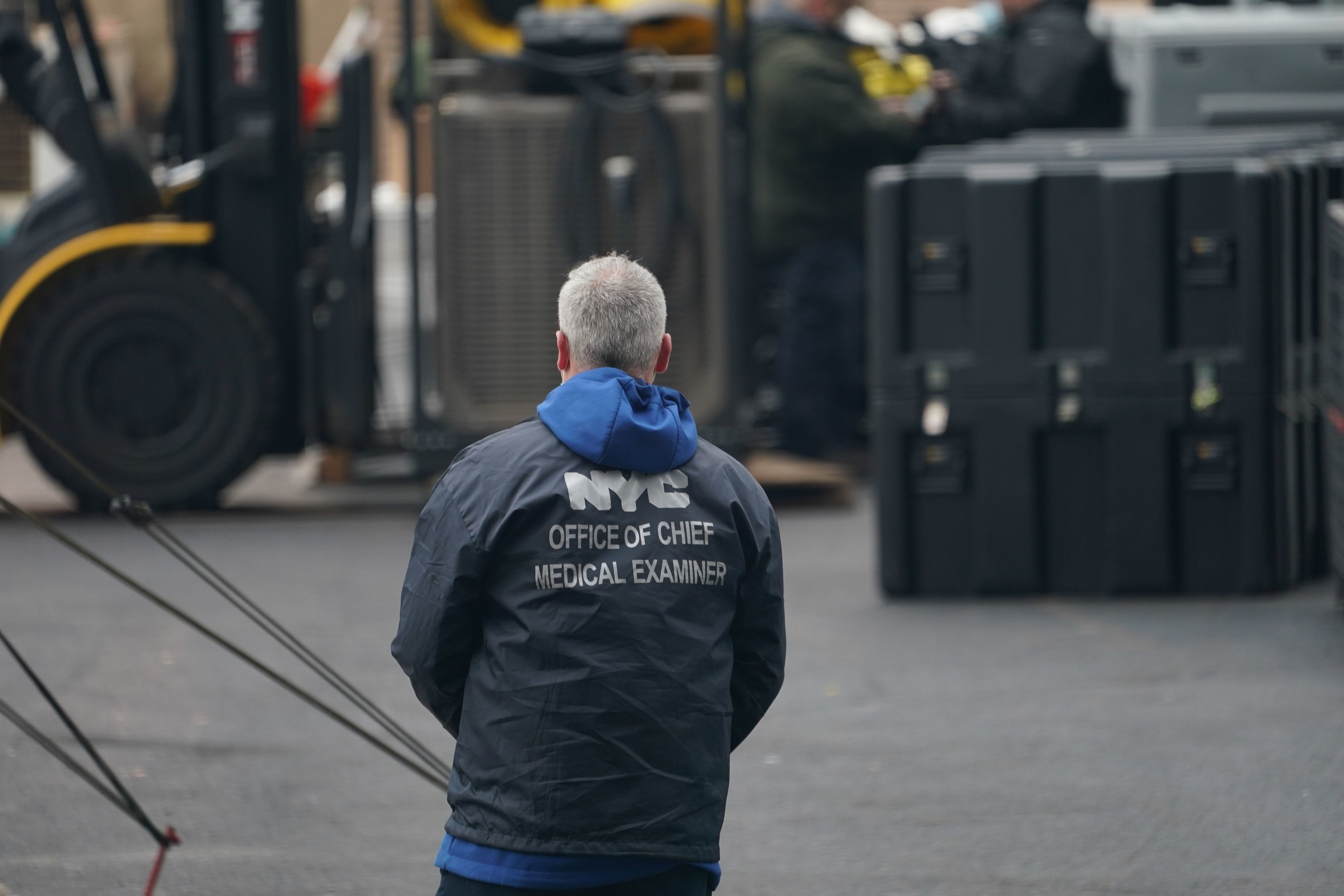
The journalists at BuzzFeed News are proud to bring you trustworthy and relevant reporting about the coronavirus. To help keep this news free, become a member and sign up for our newsletter, Outbreak Today.
Medical professionals around the US told BuzzFeed News that the official numbers of people who have died of COVID-19 are not consistent with the number of deaths they’re seeing on the front lines.
In some cases, it’s a lag in reporting, caused by delays and possible breakdowns in logging positive tests and making them public. In other, more troubling, cases, medical experts told BuzzFeed News they think it’s because people are not being tested before or after they die.
In the US, state and county authorities are responsible for collecting data on cases of COVID-19, the disease caused by the novel coronavirus, and deaths. The data is then reported to the Centers for Disease Control and Prevention.

In California, one ER doctor who works at multiple hospitals in a hard-hit county told BuzzFeed News, “those medical records aren't being audited by anyone at the state and local level currently and some people aren’t even testing those people who are dead.”
“We just don't know. The numbers are grossly underreported. I know for a fact that we’ve had three deaths in one county where only one is listed on the website,” the doctor said.
A spokesperson for the California Department of Health told BuzzFeed News in an email that “local health jurisdictions are required to report all positive COVID-19 cases to the state. In addition, when a death or impending death from COVID-19 occurs, health care facilities must immediately notify their local health jurisdiction and the state."
They did not immediately address the question of whether they’re confident their death count is accurate given the shortage of testing for COVID-19.
[Are you a health care worker or funeral director who thinks a COVID-19 death isn't being counted? Reach out to BuzzFeed News reporters Nidhi Prakash at nidhi.prakash@buzzfeed.com or Ellie Hall at ellie.hall@buzzfeed.com or use our secure tip line channels.]
And two of the hardest-hit areas in the nation — New York City and Los Angeles County — released guidance earlier this week encouraging doctors not to test patients unless they think the test will significantly change their course of treatment. That means that potentially more people in both places could be admitted to hospitals with severe respiratory symptoms and recover — or die — and not be registered as a coronavirus case.
LA County and New York City’s health departments did not immediately respond to requests for comment.
Doctors and nurses working in several hospitals around the country, who spoke with BuzzFeed News on the condition of not being named out of fear of repercussions, said that the official counts of COVID-19 related deaths are not comprehensive for three main reasons: a lack of tests and protective equipment means not everyone who contracted or dies of COVID-19 is diagnosed; overwhelmed hospitals may be running behind on reporting the numbers to state and county authorities; and some hospitals reporting their totals on a daily basis say they’re not being reflected promptly in county and state reports.
This doesn’t necessarily mean that authorities are underestimating how deadly the disease is. States across the US have implemented stay-at-home orders in part because there are an unknown number of people who have COVID-19, including some who may never even have symptoms or get mildly sick and recover but are still capable of spreading the virus.
What it does mean is that we don’t have a fully accurate picture of how widespread COVID-19 deaths are, or where they’re happening at the highest rates. While staff at hospitals prioritize treating patients and saving lives — testing doesn’t usually change the course of treatment for COVID-19 — the lack of reliable numbers becomes a real problem when it comes to understanding the true scope of the crisis, and where resources are most urgently needed, according to doctors and disaster response experts.
The lack of available COVID-19 tests has crippled the US response to the coronavirus. The initial tests distributed to major state and city labs in February proved to be unreliable, and the FDA did not allow state and clinical laboratories to make and administer their own tests until the end of the month.
Although the CDC issues guidance and guidelines, local authorities in each state have the power to decide who, alive or dead, can be tested and how the tests are administered. That’s why there has been such variation in COVID-19 testing depending on where you live. The lack of federally mandated rules on reporting positive cases and deaths reflects an ongoing problem with major disaster responses in the US — the CDC’s guidelines and recommendations don’t add up to a cohesive national system, because states can choose if and when they use those recommendations.
The way states and counties make that information public has varied significantly — in Los Angeles, COVID-19 cases are listed by neighborhood. New York City makes that data available only by county.
The process by which medical professionals report COVID-19 cases to the CDC is standardized across the country. The CDC does not publicize the number of cases or deaths it studies.
For months, the CDC instructed state and local health departments to send tissue samples from all suspected COVID-19 deaths to them so the CDC could test for the disease. On Wednesday the agency issued new guidelines, since access to tests is increasing: Now, the agency only recommends that departments incapable of testing people, both alive and dead, send samples to the CDC.
The CDC did not immediately respond to request for comment on the volume of postmortem tests they’ve been processing and how quickly results are available and sent back to local health authorities.
Some medical professionals said that it isn’t just a lack of testing that’s leading to a probable under-counting of people who contracted COVID-19 and the deaths caused by COVID-19. They said there’s also a lag in county and state records reflecting the positive COVID-19 test results and deaths they’re seeing first hand. It’s not clear why that’s the case.

“We have confirmed at least 5 cases in our hospital, but official state reporting only lists one case in our entire county,” said one department head at a small hospital in Mississippi, referring to patients who had tested positive for COVID-19 but were not reflected in county numbers.
The Mississippi Department of Health did not immediately respond to a request for comment.
A nurse in Texas told BuzzFeed News the lag is partly because test results are slow to come back — the nurse said they have seen some patients either be sent home as they start to feel better or die from the disease before their results come in.
The Texas Department of Health said in an email to BuzzFeed News on Wednesday that on Tuesday night they “updated [their] process for collecting info for [their] online case count to speed up how quickly new cases show up there,” collecting information from data that counties and local health departments make public every day, rather than waiting for those agencies to send them official case reports, “which was creating a larger lag in numbers.”
“We always encourage people to go to their local health department for the most updated numbers. They get case reports first and will have the latest information,” the Texas health department spokesperson said in the email.
How cases are reported has frustrated health care workers.
“From the beginning when it was easier to track, we'd had confirmed cases in our ER and on my unit all while the news and dot gov websites continued to claim our county and affiliated hospital counties were still at zero cases,” another nurse at a large teaching hospital in New Jersey told BuzzFeed News.
“I have still not seen any reports on COVID patients of ours who died this week,” the nurse said.
“It is beyond my capacity to constantly monitor this and I am not sure why things aren't being reported as we have rigorous documentation and reporting procedures in place for the CDC,” the nurse added, referring to the COVID-19 reporting form released by the CDC for health departments to report cases.
Robert Jensen, CEO of Kenyon International, a private company that specializes in disaster response where there’s a significant death count, said that it’s not surprising that the official numbers have not caught up to what medical professionals are seeing on the front lines.
“Right now, everyone is just doing it ad hoc. I don't think the documents have even caught up because I think those things take weeks, and I don’t think they’ll catch up for some time,” he said.
Jensen added that knowing exactly how many people are contracting and dying of the disease will be important down the track when COVID-19 vaccines become available, to get those resources to the most vulnerable communities.
“When a vaccine comes out you have to identify who’s at risk, and that's why the data is so key,” he said.
The uncertainty and lack of available testing has left some families in the US wondering about the recent deaths of people close to them, even if they can’t definitively link those deaths to the outbreak. One 44-year-old woman in Massachusetts, who also asked not to be named out of fear of repercussions online, told BuzzFeed News she’s left without answers about whether her father, who died in January, was a casualty of the virus.
She believes there’s a strong chance he had COVID-19, and at the very least thinks he should have been tested. Her father, 74, was admitted into a hospital on Jan. 22, and died about a week later, on Jan. 30, his cause of death listed on his death certificate as “respiratory failure.” She said he had a dry cough and a high fever, but wasn’t tested for COVID-19 while he was alive or after he died. He tested negative for the flu. The first CDC reported death related to the disease caused by the new coronavirus in the US was in Washington on Feb. 29. The first confirmed case of COVID-19 was diagnosed on Jan. 20 in Washington.
“The shortness of breath was why he called the ambulance,” she said. “Now my dad was not the healthiest guy. He had heart troubles and also suffered from COPD and emphysema, but he had had pneumonia numerous times and this was different for him. And the dry cough, he never had that before.”
She said she had to make the decision to take him off a CPAP ventilator when it became clear that his condition had deteriorated.
“This was the hardest decision to make, but he just kept getting worse. I wish he was tested, but obviously that can't happen now. I wouldn't wish that on my worst enemy. It was hard on him and my family,” she said. ●

